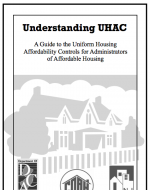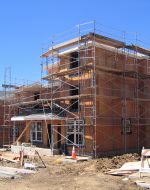While larger programs will inevitably involve more than one staff position, each program should identify a single person to serve as the primary administrator with ultimate responsibility for the program’s performance including:
- Reviewing and analyzing affordable housing agreements
- Overseeing or coordinating marketing efforts
- Determining homebuyer/tenant eligibility
- Working with attorneys to ensure that regulatory documents are executed and recorded properly
- Maintaining communication with property owners/homeowners
- Monitoring affordable units
- Managing resales of affordable ownership units
- Coordinating enforcement
Most inclusionary housing programs are administered by staff in a city or county housing department, but a growing number of programs are outsourcing some of the ongoing administrative functions.
Staffing Level
In 2007, NeighborWorks America and NCB Capital Impact surveyed a small number of inclusionary housing programs and found great variation in the staffing levels among otherwise similar programs.*
They found clear evidence of significant economies of scale. Smaller programs generally employed far more staff per unit monitored. Palo Alto. California monitored 269 units with a staff of only 1.25 (215 units per FTE), while Montgomery County, Maryland monitored 2,799 units with 6.5 FTE (430 units per FTE).
Their survey found that rental monitoring required far less staff time than oversight of homeownership units. In Fairfax County, Virginia a single half-time employee was responsible for oversight of 900 rental units, while the county employed three full time staff for their portfolio of 1,400 ownership units. Similarly in New Jersey, the state housing and mortgage finance agency was managing 1,000 inclusionary rental units with a single staff person while a team of 10 was required for 5,000 inclusionary ownership units.




-150x190.jpg)



